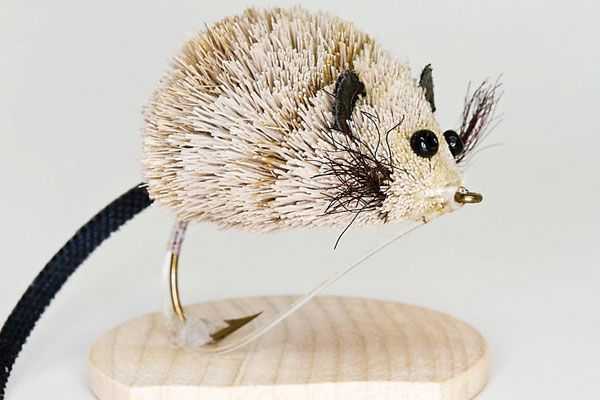Unless someone brings it up, you may not give much thought to the fact that there are two types of “big” flies. There are big bulky, wind-resistant flies that if thrown by hand would be light and bushy and not go very far, like a deer hair mouse. And there are big, heavy flies that if thrown by hand would go a long way because of their weight. When tying a fly, it’s nice to strike a balance between the weight and wind resistance. That would help when casting them. With brown trout coming into the spawning season, it will take big bulky flies and heavy streamers to distract them from, well… doing their business.
Let’s look at how we cast the two different type flies. I like to start by doing a quick equipment review. Test the leader’s balance to the fly by extending only the leader out of the rod tip. Try to make good loops with the big fly on. If you can’t do it, fix that issue first. Try a larger diameter and/or shorter leader.
If you have the equipment right, here are a few tips to getting the fly to the target. Remember we are casting the line, not the fly. To cast bulky flies, increase line speed by hauling and making a tight loop. The most difficult thing with wind resistant flies is the waiting. You have to wait for the line to pull that fly along. So watch your line on the back cast and wait, and wait. Let that loop extend out and almost straighten the line before starting the forward cast. So increase line speed with a tight loop and wait. Line speed and timing.
Casting a heavy fly is different from casting a bulky fly. With a heavy fly, we want to slow down. Make sure to lift the fly to the water’s surface before starting a back cast. Do it with a roll cast or spey-type move that gets the fly up and in position for the next cast. Be smooth. If you try to make a cast with the fly deep in the water or too far out, it will overload the rod. That will cause the rod tip to dip and come back up, which will cause a tailing loop. The line and fly weight will aid in bending the rod, so slow down, let the rod do the work. You will be surprised how doing that will smooth out your cast.
Like a bow and arrow, it’s not how fast you draw the bowstring back, it’s how deep you bend the bow that launches the arrow. Try an oval cast, which is also known as a constant tension cast. It lets you keep the fly moving on the back cast rather than waiting for the loop to unroll before starting it in the opposite direction. There are several things we need to change to cast a heavy vs. a bulky fly.
You don’t throw a Nerf ball the same way you throw a shot put. You don’t cast a bulky fly the same way you cast a heavy fly.
If you get out for some browns this fall, send your pictures to Coastal Angler/The Angler Magazine. You could be published!
[easy-social-share]

